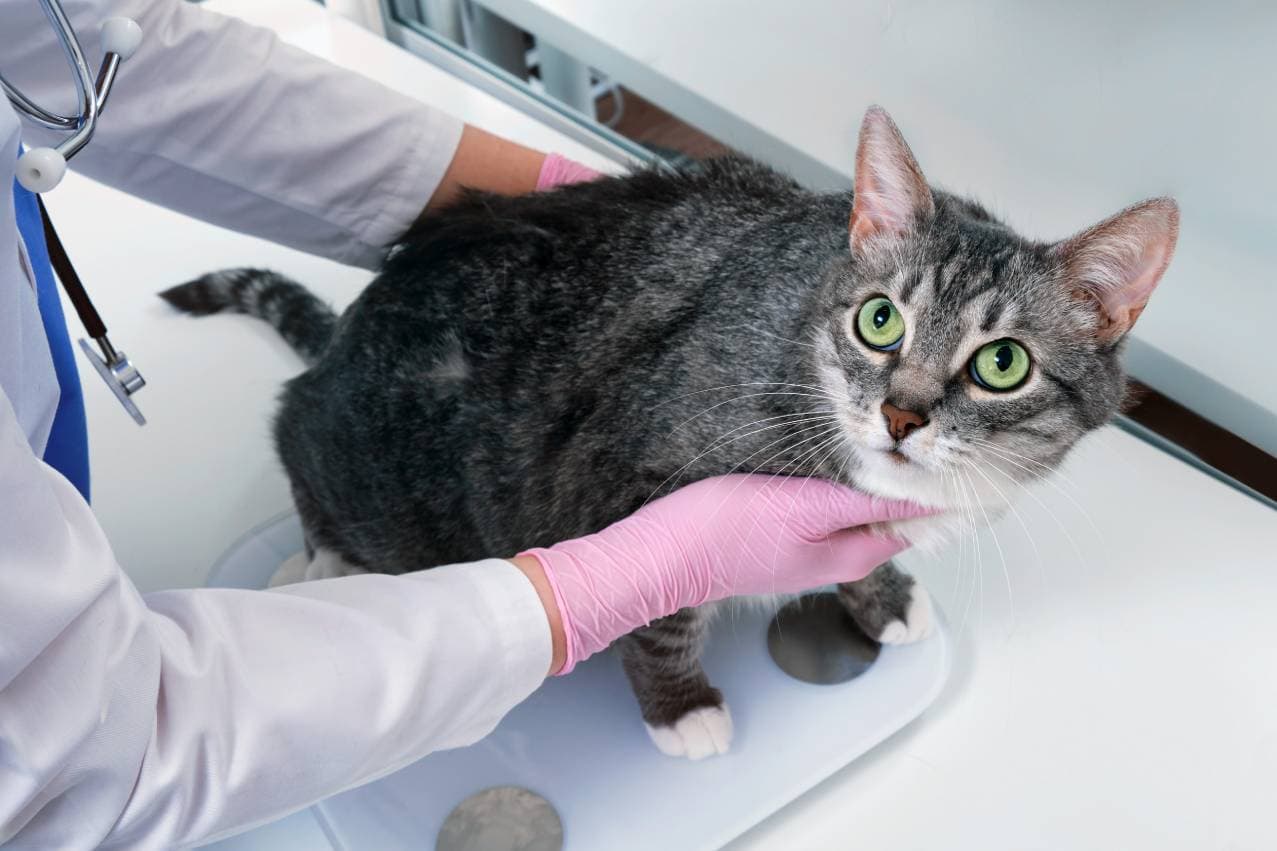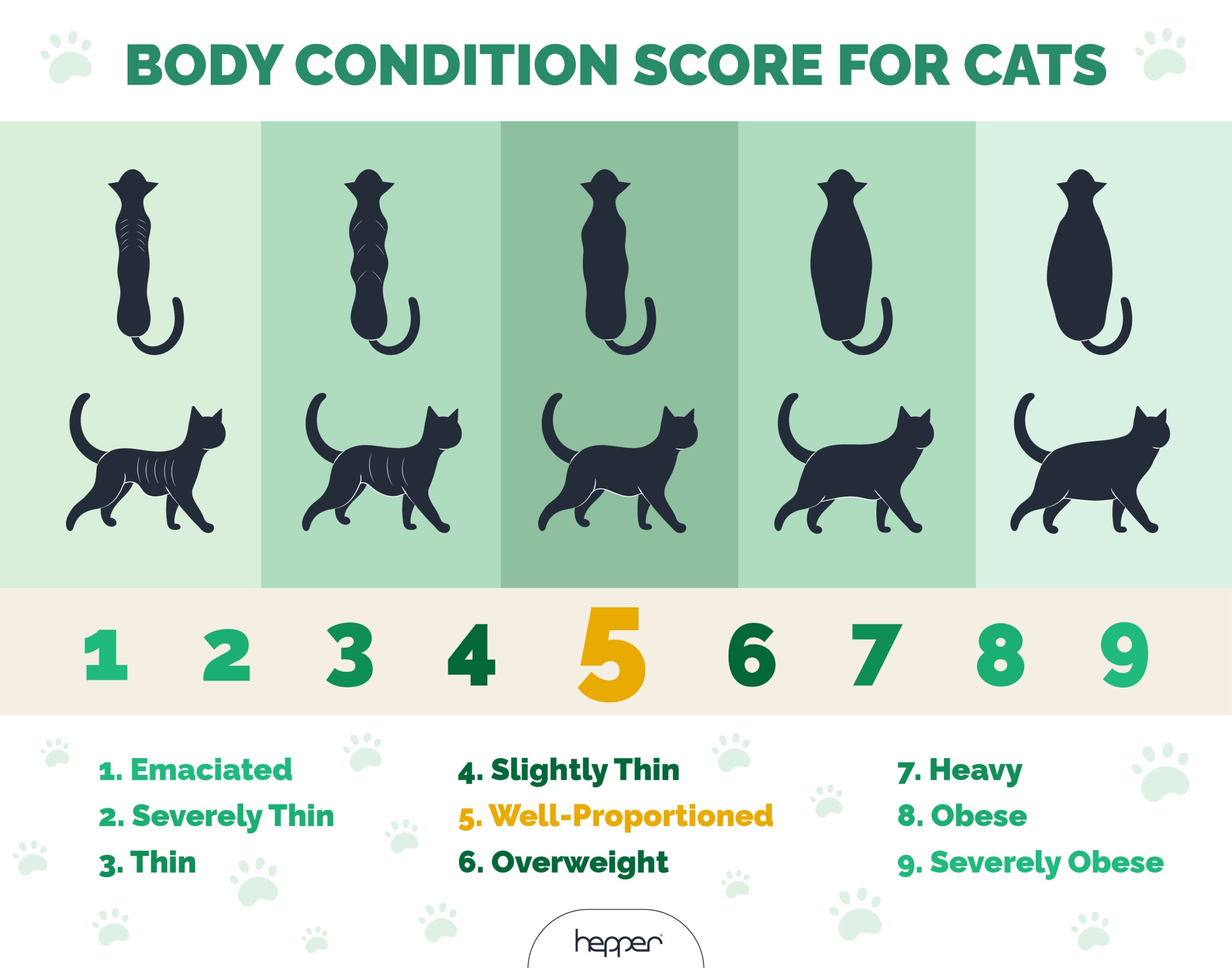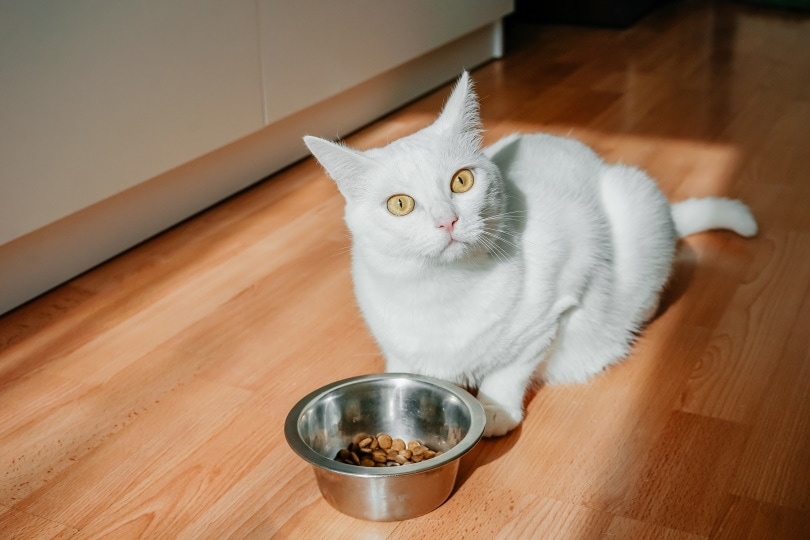How to Fatten Up a Cat: 8 Healthy Ways (Vet Answer)
By Dr. Paola Cuevas, MVZ (Vet)
Updated on

Click to Skip Ahead
Are you puzzled by why your cat is still underweight, even though they have access to plenty of food? Or maybe you have found a stray that looks skinny and malnourished, and you would like to help them recover a healthy weight. There are several reasons that you might be wondering about the most effective and healthy ways to fatten up a cat. Let’s take a closer look!
Your Cat’s Weight: What Is a Healthy Range?
Let’s start by stating that, as in the case of humans, cats need to be in a certain weight range to remain healthy and thrive. A cat that is malnourished and too thin is unhealthy and more prone to disease. However, a cat that is overweight is also unhealthy and more prone to disease. With this in mind, you only want to fatten up a truly underweight cat to help them reach a healthy weight and be able to thrive in their daily activities.
Trending photos and videos on social media of obese cats do not represent healthy cats, even if some people think they look cute or funny. As responsible cat owners, we should never allow our cats to become overweight because this will have serious consequences on their health.
That said, since felines come in a variety of sizes, a cat’s weight alone is not a reliable indicator of their health, so veterinarians use a grading system called the body condition score. Only cats with a body condition score of 1–4 will need to gain weight. Cats with scores around 4–6 are considered to be in the healthy weight range, with the ideal body condition score being 5.
So, let’s learn about the healthy ways to fatten up a cat that needs to put on weight.

Ruling Out Medical Conditions
First things first, we need to rule out the possibility of the cat being underweight as a result of a medical condition or underlying disease. If your cat is underweight, it is recommended that you visit a veterinarian and get the cat checked, as many medical conditions can cause low weight. Some of the most common are as follows.
1. Dental Problems
The pain caused by teeth or any injury in the mouth makes eating unpleasant and your cat will avoid it as much as possible.
2. Parasites
Intestinal parasites are commonly found in underweight animals, as they rob the host of many essential nutrients.
3. Food Allergies or Sensitivities
Certain foods may not be ideal for your cat and will make them feel unwell.
4. Infections
Needless to say, the animal will not be food-driven if they’re fighting an infection.
5. Hyperthyroidism
This endocrine disease causes cats to lose weight. It is becoming more common due to factors like exposure to bisphenol A, or BPA, from plastic bowls or can linings and to the phytoestrogens from soy used as a protein base in many formulations of commercial cat food1.
6. Inflammatory Bowel Disease (IBD)
Anxiety, sensitivities, and intolerances can all cause IBD in a cat. Pain and discomfort from this condition may be the reason the cat is refusing to eat and thus losing weight.
A veterinarian will make a complete physical evaluation of the cat and might need to collect biological samples, such as blood or feces. If the vet discovers that the reason the cat is not eating or not putting weight is actually due to a medical condition, they will provide accurate treatment and a specific diet accordingly. Make sure to cooperate with the veterinarian and follow all the instructions regarding diet and treatment.

7. Malabsorption, Pancreatic Insufficiency, and Infections
Malabsorption is the medical term used for cats that are unable to normally absolve and utilize the nutrients in their food. It can result from interference with digestion, absorption, or both. It has several causes, including the lack of digestive enzymes, IBD, tumors, dietary sensitivities, or intestinal infections from viruses, bacteria, or parasites.
Review of Other Factors
Once you have ruled out the possibility of the cat suffering from a medical condition, you should check for other factors that could be the cause of their malnourishment:
1. Quality of Their Current Diet
Cats are obligate carnivores and require a diet based mostly on animal proteins with a moderate amount of fat and very limited carbohydrates. The quality of the base protein source in your cat’s diet is important for their overall health. The amino acids derived from the protein source are the building blocks of your cat’s muscles, organ tissue, blood, hormones, and enzymes. The daily consumption of adequate levels is required for the maintenance and function of vital organs.
Unlike herbivores or omnivores, carnivores cannot survive only on vegetable sources of protein. They cannot produce essential amino acids such as taurine and arginine and rely only on their diet to obtain them. A premium cat diet should have an animal protein as a base product and should ideally not contain vegetable products or only a minimal amount. This is a challenge since most commercial cat food formulas contain vegetables because plant proteins are cheaper than meat proteins.
Pet food companies will have a higher profit margin when using corn, wheat, soy, rice, or peas. Another problem with vegetable sources is that the number of carbohydrates in the diet will be increased, and cats are not supposed to have more than 10% of carbohydrates in their diet. You want to make sure that the base protein source is animal protein and not vegetable protein. Try to stick with whole protein as a base versus a “meal protein.” These mystery meats and by-products tend to be highly processed and lose nutritional quality. This is why it is very important to feed premium products and to check the ingredient labels carefully.
While providing our feline companions with high-quality food is paramount, selecting the right food and water bowl is equally important. The modern yet practical design of our Hepper NomNom Cat Bowl combines cat-catered features, like whisker-friendly shallow dishes and slight elevation, with a contemporary style aimed at protecting your floors from messy eating and drinking. The NomNom is entirely dishwasher safe and was thoughtfully created with your cat’s health and well-being in mind.
- NO MESS - The 360° tray on this cat food and water bowl set has a raised design to catch and...
- WHISKER FRIENDLY - Shallow and wide metal containers with flat bottoms ensure your kitty can enjoy...
2. Environmental Factors
It is important to be aware of the possibility of a cat refusing to eat due to environmental factors, and some detective work and observation will be necessary to rule this out.
- Their food bowl is near a noisy area or loud machines, such as a dishwasher or a laundry machine.
- The plate is near the litter box. This is incredibly unhygienic but is still a common practice.
- There are cats showing dominance over others, not allowing them to eat. As a general rule, each cat should have their own plate. But in some cases, even this is not enough, and the animals must be completely separated, getting their meals in different rooms or having different meal times.
- Anxiety can cause loss of appetite. Investigating the cause of the anxiety in your cat and addressing it accordingly can go a long way in helping your pet put on weight and regain their mental health.
- Your cat may be a “shy eater” and needs privacy to eat. Some cats do not like to be seen by an anxious human when they are eating.
- Perhaps you recently changed your cat’s food and their body does not agree with the new choice. Changes in food must be done gradually, mixing the usual food with the new one in increased percentages over 10 days or so. Start with as little as 10% of the new food, and increase by the same increment each day. Reports of cats refusing to eat even after small formula changes by the pet food producers are also common.

The 8 Tips to Fatten a Cat the Healthy Way
Now that we have ruled out the possibility of medical and environmental factors, here are some tips to fatten a cat the healthy way.
1. Use Canned Kitten Food
Canned kitten food is higher in the amount of protein and fat per gram than canned food made for adult cats. Kittens are growing and need the additional source of amino acids and fatty acids to build up their growing muscles and organs.
2. Pick Fresh or Wet Food Over Dry Food
In general, fresh or wet food is higher in protein and lower in carbohydrates than dry food. Cats also seem to accept it more readily than dry food, especially those that are having trouble finding an appetite.

40% OFF at Smalls Fresh Cat Food
Use Code Hepper24 at Checkout
3. Increase the Food Amount Gradually
Do not expect your cat to eat the goal amount of food for weight gain in one go. Sometimes, dividing the day’s diet into many small meals is the way to go until you can gradually increase the amount of food in each session and decrease the number of feeding sessions.
4. Supplement Fish Oil
Fish oil is an excellent way of increasing the calorie content in a cat’s food with the additional benefits of enhancing the food flavor and making the cat’s fur look healthy and shiny. It is an excellent source of healthy omega fatty acids. We love Animal Essentials Ocean Supreme Fish Oil Dog & Cat Supplement, and here is a list of our other top choices.
5. Offer Healthy Homemade Treats and Prices
Offering pieces of boiled chicken or boiled egg is a great way to increase a cat’s caloric intake. It is important to remember to only boil these foods with water and not fry them, with no salt or any other condiment added. You can use them as a reward for finishing the goal target meal or mix them with the food to enhance the flavor. If your cat is accepting their meals normally, you can use them as treats between the meals.

6. Make the Food More Attractive
Some cats can be very fussy, and you will need to use your imagination to sneak in more calories. Things like using the broth from boiled chicken (remember, only boiled—no added onion, garlic, or condiments) in your cat’s food or playing with the consistency, presentation, shape, or temperature of the food are resources you can try.
Many cats begin accepting food after it has been prewarmed. If you think about the fact that freshly hunted prey in the wild has a certain temperature, it makes sense that cats would prefer their meals a bit on the warm side, right? Just remember, don’t offer it too hot! If your cat gets burned, all your efforts can be lost, as it will make them wary of trying their next meal.
7. Have More Than One Option
Just like us, some cats just don’t like certain recipes, so you’ll need to choose more than one kind of high-quality cat food and by trial and error, land on the one that your cat likes and accepts the best. An easy way to know is by offering different kinds of food all at once and seeing if your cat has any particular preference.
8. Keep an Eye on Sensitivities and Intolerances
Sensitivities and intolerances to certain foods or components of a formula can be the reason that a cat is eating less and losing weight. These sensitivities can develop later, so food that used to be accepted and digested by the body may now be making your cat feel unwell. Gas and bloating, smelly gas and feces, unformed or loose feces, diarrhea, and vomit are all signs that you should further investigate your cat’s food.
Final Thoughts
We hope you find these recommendations useful in helping your cat put on some weight and recover a healthy range to thrive. With observations and dedication and by following our advice, you should be able to increase the number of daily calories ingested by your cat. Over time, your cat should gain weight the healthy way!
See also:
Featured Image Credit: Zhuravleb Andrey, Shutterstock













